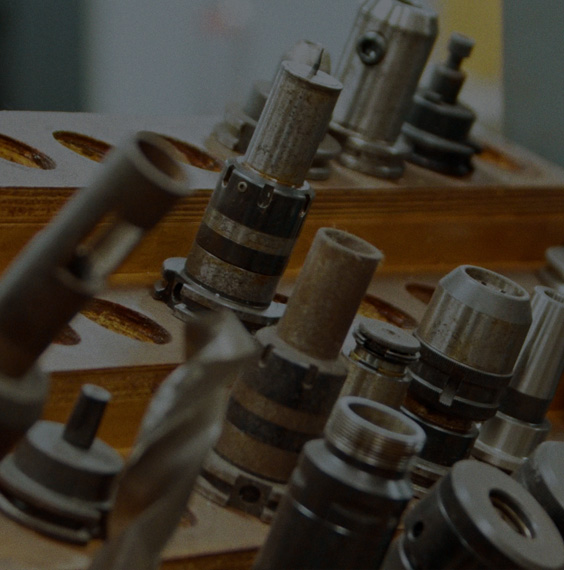Fourth of a skilled trades exploration series: machinists and tool & die makers
The COVID-19 pandemic helped launch what has been called the “Great Resignation,” as a record 47.8 million people quit their jobs in 2021. Rates of what the Bureau of Labor Statistics calls “quits” rose dramatically from March 2020 through November 2021, then remained steady near those record numbers in 2022.
The two main reasons for quitting were low pay and lack of advancement opportunities, according to a Pew Research study.
They could find what they are looking for in skilled trades, where openings remain plentiful. Durable goods manufacturing, for example, can only fill 65% of the available jobs if every experienced, unemployed person had a role.
What does it take to qualify for these plentiful roles in skilled trades, what is the work like and how much can you get paid? Our series, The Job You Want, helps answer these questions.
What is the job outlook for machinists & tool and die makers?
Overall, growth in these related fields is expected to be about 7% through 2030, according to the Bureau of Labor Statistics. However, getting into more detail sees much more opportunity for machinists with about 30,000 net new jobs projected and 391,000 overall opportunities for machinists by then.
More in this series: Wind Turbine Tech | Heavy Equipment Tech | Welder | Solar Installer | Broadcast Tech | Industrial Machinery Mechanic
There is overlap between the roles. Both need to be able to read computer-aided drawings and operation manual and computer numerically controlled (CNC) machine tools. Machinists normally operate the machines, however, using them to create precision parts. Automation may limit more need for tool and die makers, which is already a much smaller field than machinists.
Demand for these workers remains highest in the upper-Midwest states traditionally known for manufacturing.
What kind of training will I need?
Machinists and tool-and-die makers need only a high school diploma to get started in the field, and will learn on the job. Some post-secondary education is available.
Rob Fewert is a machinist at Jeniko Machine Works in South Elgin, Illinois. He said he got started with high school shop classes and had the added advantage of having a father who was a toolmaker. After high school, he initially pursued an associate degree in manufacturing technology, but after a year was offered a job with a formal apprenticeship in mold making and decided it would be a better route. He did, however, continue with formal part-time schooling to study mold-making theory.
Math skills and attention to detail are big plus, Frewert added.
Do I need a certification or license?
Machinists and tool and die makers are not licensed. Different credentials are available through the National Institute for Metalworking Skills, including various CNC and diemaking credentials.
What will it cost to become a machinist or tool and die maker?
There is a low financial barrier to entry because a candidate typically needs only a high school diploma and advanced training is often on the job or can be employer-paid.
There is a union, the International Association of Machinists and Aerospace Workers, and membership would come with dues as well as related benefits. Most small shops, however, are non-union.
What kind of work will I be able to get?
Machinists most often work in machine shops. Tool and die makers land in metalworking shops or motor vehicle parts manufacturing.
But the career opportunities are richer than that. Overlapping skills and the opportunity for on-the-job training allow workers to pick up different skills, and from there workers can go a lot of directions.
“Originally, that's one of the first reasons I got into in the manufacturing trade,” Frewert said. “You start off very basic and you can go all the way up to management, design, engineering, ownership or start your own shop. The sky's the limit really.”
What will my work environment be like?
Frewert said machining process have become more refined. Shops are not particularly loud or dirty. He tends to work individually, tackling a list of jobs each day. He spends a lot of time on a PC or on a CNC machine and is on his feet a lot.
Workers likely have a set shift, though it could be second or even third shift. Overtime is common, Frewert said. The machines you operate will come with hazards that include moving parts, flying pieces and noise.
What can I expect to earn?
According to the BLS, the median income for tool and die makers was $57,000, more than $11,000 more than the median wage for all occupations. Machinists earned quite a bit less, at $47,730, but that is still more than the $45,760 median for all occupations.
Frewert said the overtime, typically paid at 150% of the regular hourly wage, is where the financial opportunities really come. Ten hours of overtime is very normal, and more is often on the table.
The information contained in this article is intended for general information purposes only and is based on information available as of the initial date of publication. No representation is made that the information or references are complete or remain current. This article is not a substitute for review of current applicable government regulations, industry standards, or other standards specific to your business and/or activities and should not be construed as legal advice or opinion. Readers with specific questions should refer to the applicable standards or consult with an attorney.








